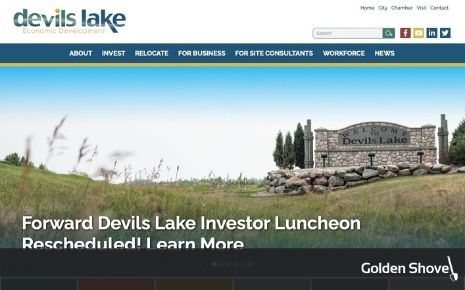7 Things Your Economic Development Website Needs

7 Jul 2021
News, Website Development
There are seven things every economic development website needs. Before we get started, ask yourself, are most of your leads coming from your website? Are you confident your website is generating as many qualified leads as possible? If you have any doubts, it's time to compare your online presence with today's industry standards. Needless to say, your economic development organization (EDO) needs its own identity by way of a clear and specific URL. It also goes without saying that your website needs to be attractive and functional across the full spectrum of browsers and mobile devices.
7 Things Your Website Needs to Stay Competitive
Being competitive means being able to garner the attention of site selectors, retain the trust and esteem of your local business community, and attract a skilled workforce. The items in the list below aren't ranked in order of importance. They're all equally important.
1. Advanced SEO
Promoting your website is important, but you also want to make it easy for site selectors to find you organically. Search engine rankings are valuable and holding that ranking is an ongoing process. Don't leave that to chance. Hiring an expert will get you better, more sustainable results faster. You can't manage what you don't measure, and that rule applies to quality site traffic analytics. It's to your advantage to be able to see the frequency, traffic patterns, and source of your site visitors.
2. Rich, Compelling Stories
The days of polished marketing collateral are over. Authentic stories rule. Your prospects want more than information. They want social proof in the form of news, narratives, and profiles that illustrate which industries, companies, and individuals are thriving in your community, and why. Your EDO website needs to be an ever-fresh source of honest, relatable content designed to help site selectors envision themselves in your community.
3. Current, Relevant Data
Not just numbers, but data presented in a way that's readily accessible, visually engaging, and easy to understand. That information needs to be presented in context, yet visually designed to stand apart. When site visitors are looking for information, they'll typically scan, rather than read. If key numbers are surrounded by other text, they're likely to be overlooked.
4. Interactive Maps & Quality Media
Anyone can access an online map. Your EDO website needs to present maps in context. Site selectors need to know the whereabouts of railroads, airports, distribution hubs, and distances to major cities. They also need access to up-to-the-minute real estate site information, not just business sites, but also information about neighborhoods and housing at various levels. Last, but certainly not least, they need to get a feel for the character of your location and overall quality of life. A photo tour is minimal. A video/VR presentation is far more convincing.
5. In-Depth Workforce Information
In addition to the data, site visitors want to know who your community's workforce development partners are, and what specific educational resources they offer.
6. Incentives, Policies, Zoning, Land Use, and Tax Information
This information must be easy to find, clear, current, and concise. We'll leave it at that.
7. Clear, Personable Contact Information
If you want the opportunity to meet site selectors, introduce yourselves. A good contact page should present your team by name, photo, title, and contact information. Meanwhile, your site should also offer simple, low commitment ways to connect including social media connections and the chance to sign up for an e-newsletter or mailing list.
As technology advances, standards for online presence continue to be raised. Staying up to date matters more than ever. After all, you can't expect your EDO to be a priority to site selectors if your website doesn't make it clear that your organization is a priority to itself.
More Topics






